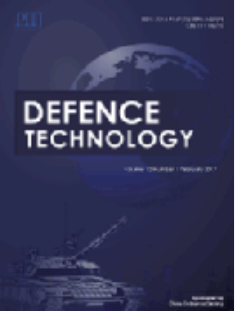Review on integral stiffened panel of aircraft fuselage structure
IF 5
Q1 ENGINEERING, MULTIDISCIPLINARY
引用次数: 0
Abstract
The increasing demand to decrease manufacturing costs and weight reduction is driving the aircraft industry to change the use of conventional riveted stiffened panels to integral stiffened panels (ISP) for aircraft fuselage structures. ISP is a relatively new structure in aircraft industries and is considered the most significant development in a decade. These structures have the potential to replace the conventional stiffened panel due to the emergence of manufacturing technology, including welding, high-speed machining (HSM), extruding, and bonding. Although laser beam welding (LBW) and friction stir welding (FSW) have been applied in aircraft companies, many investigations into ISP continue to be conducted. In this review article, the current state of understanding and advancement of ISP structure is addressed. A particular explanation has been given to (a) buckling performance, (b) fatigue performance of the ISP, (c) modeling and simulation aspects, and (d) the impact of manufacturing decisions in welding processes on the final structural behavior of the ISP during service. Compared to riveted panels, machined ISP had a better compressive buckling load, and FSW integral panels had a lower buckling load than riveted panels. Compressive residual stress decreased the stress intensity factor (SIF) rates, slowing down the growth of fatigue cracks as occurred in FSW and LBW ISP.
飞机机身结构整体加筋面板研究进展
对降低制造成本和减轻重量的需求日益增长,促使飞机行业在飞机机身结构中将传统的铆接加劲板改为整体加劲板(ISP)。ISP 是飞机工业中一种相对较新的结构,被认为是十年来最重要的发展。由于焊接、高速加工(HSM)、挤压和粘接等制造技术的出现,这些结构有可能取代传统的加劲板。虽然激光束焊接(LBW)和搅拌摩擦焊接(FSW)已在飞机公司得到应用,但有关 ISP 的许多研究仍在继续。在这篇综述文章中,阐述了目前对 ISP 结构的理解和进展情况。文章特别解释了 (a) ISP 的屈曲性能、(b) ISP 的疲劳性能、(c) 建模和仿真方面的问题,以及 (d) 焊接工艺中的制造决策对 ISP 在服役期间最终结构行为的影响。与铆接面板相比,机加工 ISP 具有更好的压缩屈曲载荷,而 FSW 整体面板的屈曲载荷低于铆接面板。压缩残余应力降低了应力强度因子(SIF)率,从而减缓了疲劳裂纹的增长,如在 FSW 和 LBW ISP 中出现的情况。
本文章由计算机程序翻译,如有差异,请以英文原文为准。
求助全文
约1分钟内获得全文
求助全文
来源期刊

Defence Technology(防务技术)
Mechanical Engineering, Control and Systems Engineering, Industrial and Manufacturing Engineering
CiteScore
8.70
自引率
0.00%
发文量
728
审稿时长
25 days
期刊介绍:
Defence Technology, a peer reviewed journal, is published monthly and aims to become the best international academic exchange platform for the research related to defence technology. It publishes original research papers having direct bearing on defence, with a balanced coverage on analytical, experimental, numerical simulation and applied investigations. It covers various disciplines of science, technology and engineering.
 求助内容:
求助内容: 应助结果提醒方式:
应助结果提醒方式:


